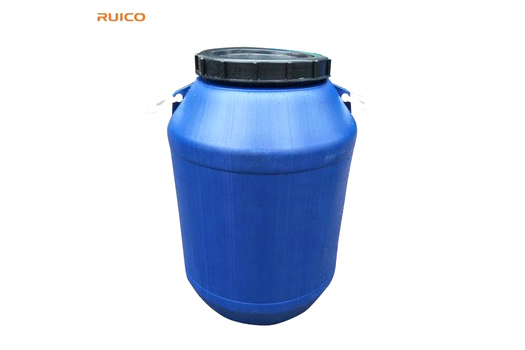
Styrene-acrylate emulsion is obtained by emulsion copolymerization of styrene and acrylate monomer. Styrene-acrylic emulsion is a system that has been studied more in emulsion polymerization, and it is also one of the top ten non-crosslinked emulsions with important industrial application value in the world today. As an important intermediate chemical product, styrene-acrylic emulsion has a very wide range of uses. It is now mainly used as architectural coatings, metal surface latex coatings, floor coatings, paper adhesives, and adhesives. Styrene-acrylic emulsion has good adhesion, transparent film, good water resistance, oil resistance, heat resistance and aging resistance. Styrene-acrylic emulsion is used as a paper adhesive, and it can also be used in conjunction with adhesives such as starch, polyvinyl alcohol, sodium carboxymethyl cellulose, etc.
Styrene-acrylate emulsion is Milky white liquid with blue light. The solid content is 40-50%, the viscosity is 80-2000mPa·s, the monomer residue is 0.5%, and the PH value is 8-9. Styrene-acrylic emulsion has good adhesion, transparent film, good water resistance, oil resistance, heat resistance and aging resistance. Styrene-acrylic emulsion is used as a paper adhesive, and it can also be used in conjunction with adhesives such as starch, polyvinyl alcohol, and sodium carboxymethyl cellulose.
Advantages of emulsion polymerization:
(1) Water is used as a medium, which is cheap and safe. The latex has low viscosity, which is conducive to stirring, heat transfer, transportation and continuous production;
(2) The polymerization rate is fast, and the product molecular weight is high, and the polymerization can be carried out at a lower temperature;
(3) It is conducive to the direct use of latex and the production of environmentally friendly products, such as water emulsion paint, binder, paper, leather, fabric treatment agent, etc.
Disadvantages of emulsion polymerization:
(1) When solid products are needed, the emulsion needs to go through processes such as coagulation, washing, dehydration, and drying, and the cost is relatively high;
(2) Impurities such as emulsifiers remain in the product, which are difficult to completely remove and impair electrical performance.
Regional Sales Manager
Zhejiang Ruico Advanced Materials Co., Ltd. (Stock No.873233)
Add: No.188, Liangshan Road, Linghu Town, Nanxun District, Huzhou City, Zhejiang Province, China 313018
Phone: +86 (572) 2903236
Fax: +86 (572) 2905222
WhatsApp: +86 15968208672
Cellphone: +86 15968208672
Website:www.ruicoglobal.com
E-mail: [email protected]
